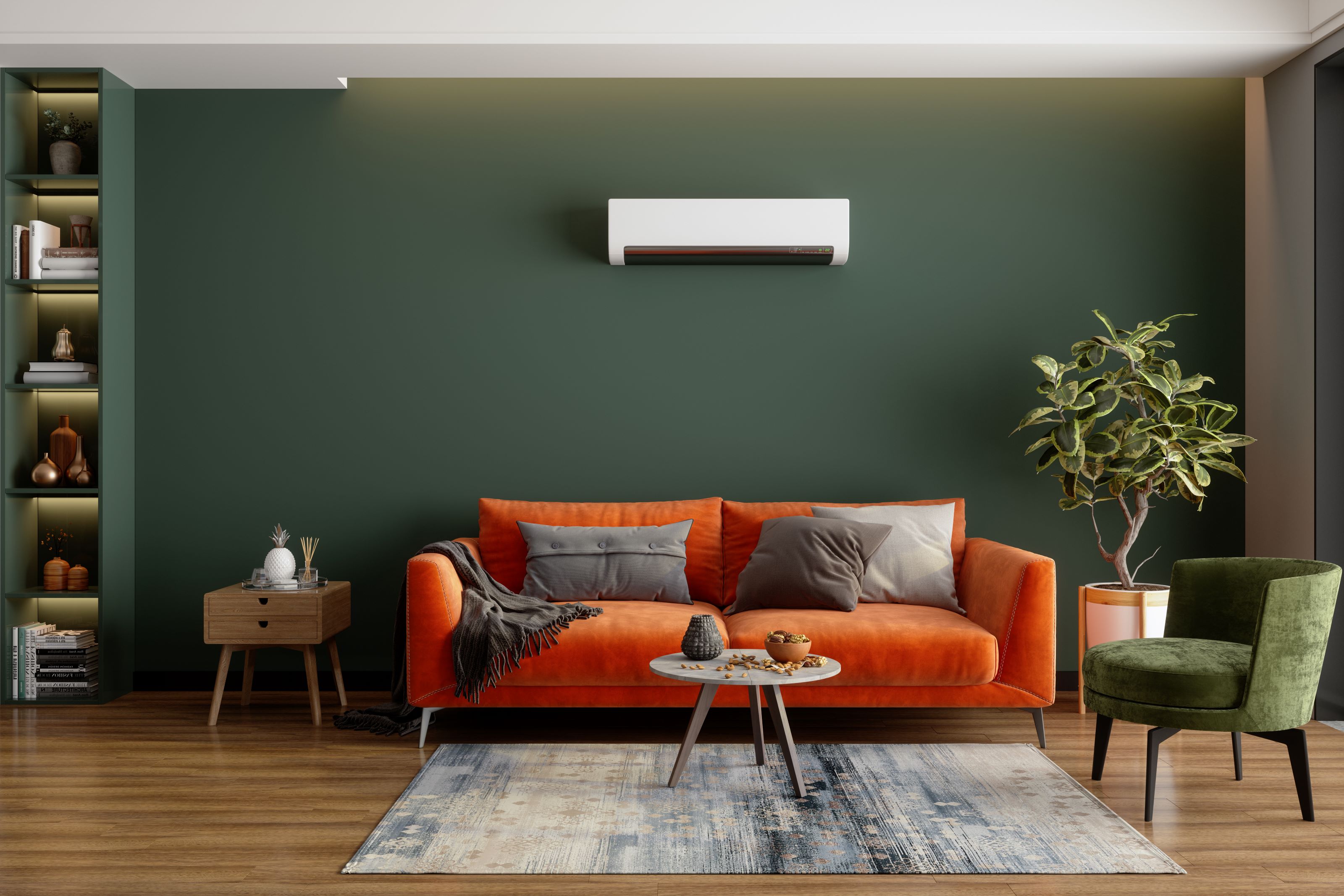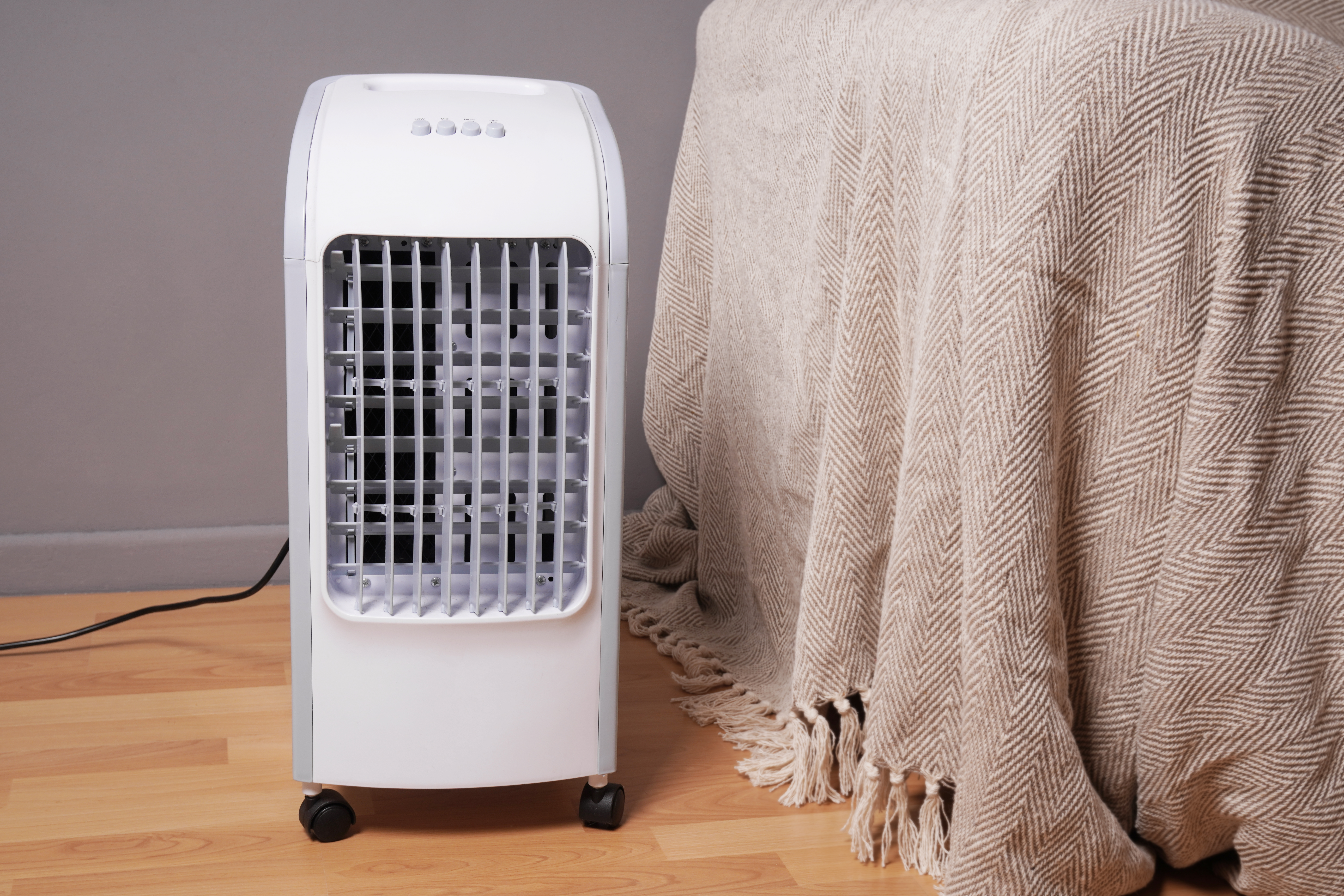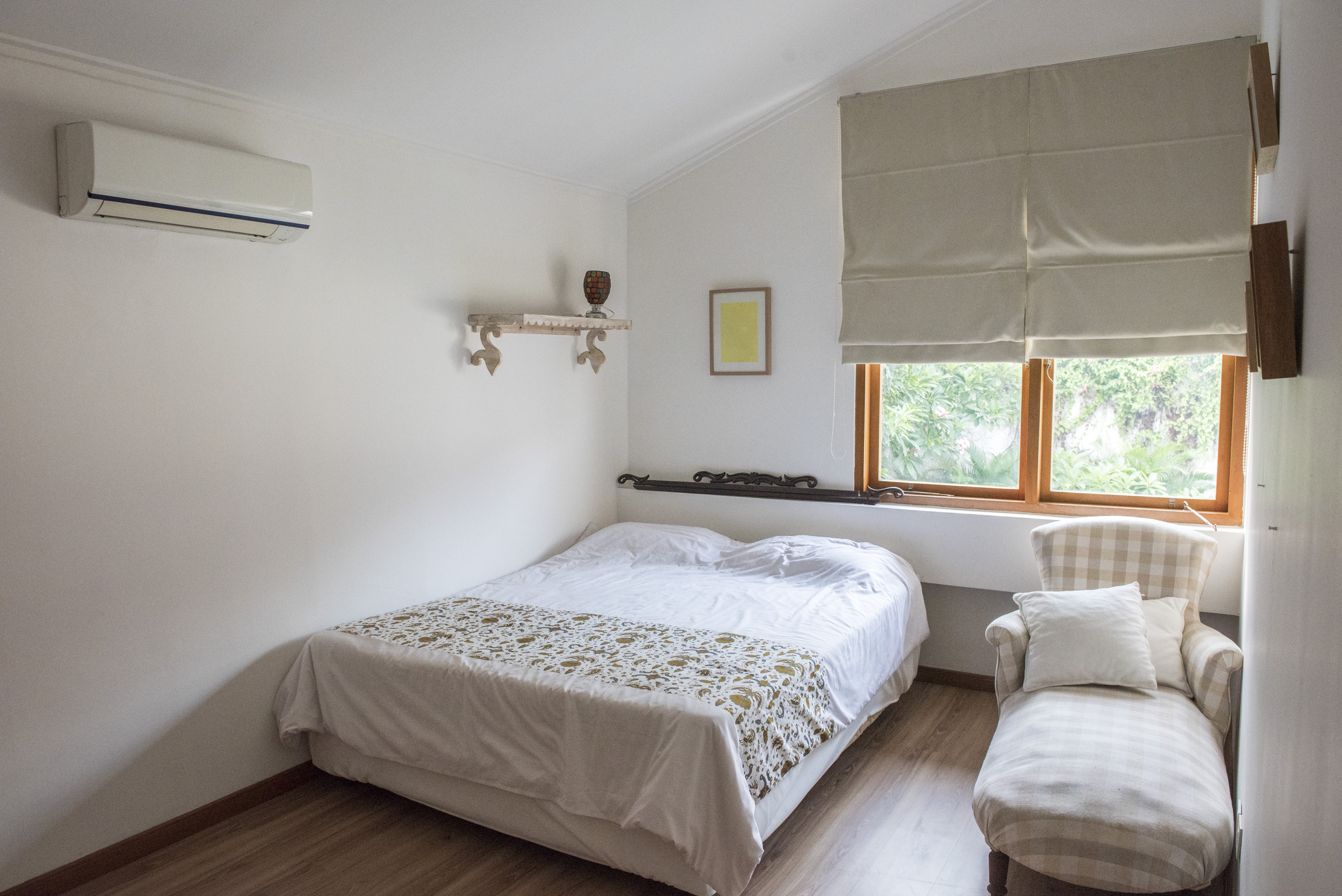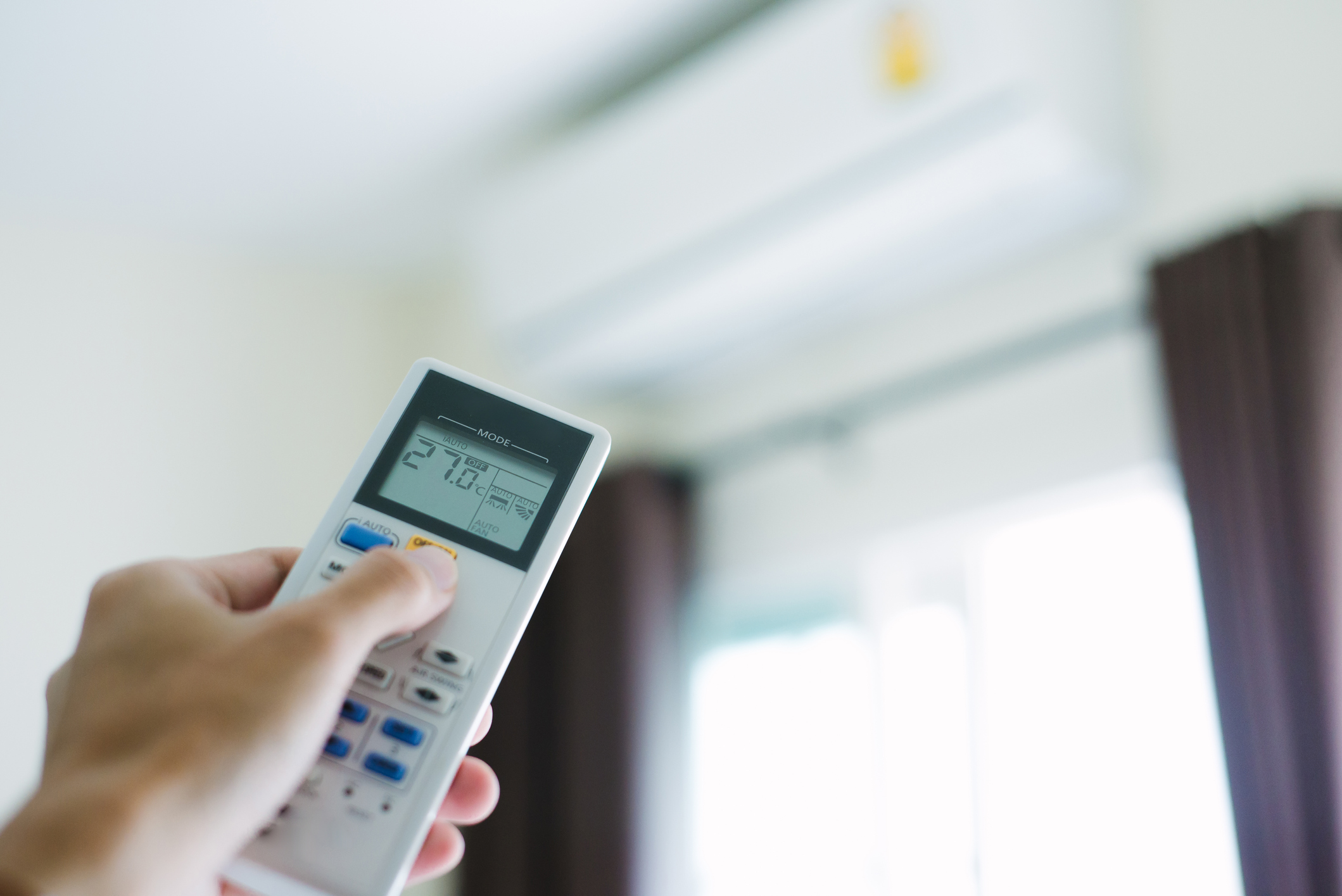Home Air Conditioning: The Pros, Cons, Costs and More
Home air conditioning is fast becoming a must-have. We explain the options and the pros, cons and costs to help you establish whether it's right for your home

Home air conditioning is increasingly on our radars after temperatures hit an unprecedented 40.2C in July.
While we're beginning to design homes which regulate the heat, not all do so as effectively as we might like. And with more of us working from home, domestic cooling systems are becoming more popular.
Therefore, incorporating an air conditioning system into your self build or home can be a smart move to keep your home cool during any future heatwaves.
Air conditioning units can have high efficiency ratings but they are still dependent on electricity. This means choosing the right system to suit your needs is essential to keep running costs as low as possible.
Here we look at the advantages and disadvantages of some of the best air conditioning options on the market.
What are the Different Types of Home Air Conditioning?
Air conditioning is not a one-size-fits-all solution. There are a number of options from portable units to fully integrated units that cover the whole home.
The simplest air conditioning unit is the portable unit. They are an all-in-one unit that is typically around the same size as a large kitchen bin. The unit is simply plugged into a wall socket and can operate anywhere in the home — you’ll be able to move it from room to room as required. There is the requirement to place a duct out a window to expel the resultant warm air to the outside and you will also require a container to capture the condensation produced.
Fully installed air conditioning units will have two parts and need to be installed by a registered gas engineer. There is a fan unit that is located outdoors and is connected via copper pipework and electrical connections to an indoor unit that delivers the cool air. The indoor unit can be a simple bolt-on box that goes on the wall at a high or low level, a hidden unit that can be in the ceiling or boxed in above wardrobes or above the door with the air distributed through a grille, or it can also be a fan unit that is located in a plant room or loft space with the cool air distributed to the rooms via a number of ducts. These systems are known as split air conditioning systems.
Portable Air Conditioning Units

A mobile unit, such as a portable air conditioner or evaporative cooler, is ideal for occasional cooling. They are well suited to single-room use and can be easily stored during the rest of the year.
Evaporative coolers use less energy than refrigerant-based coolers as they work on the principle of blowing air through a fine ‘curtain’ of water that then evaporates and introduces a cooling effect. They need to have a supply of dry air and the resultant ‘moist’ air needs to be exhausted at the opposite end of the room. This is ideal in hot, dry climates such as Australia but in the UK the humidity levels can be too high, and cross ventilation too impractical for any actual cooling.
For really effective cooling, look for refrigerant-based air conditioning units — despite the fact that they are more power hungry.
(MORE: Best Portable Air Conditioners)
Pros and Cons of Portable Air Conditioning Units
The main benefit of a portable air conditioning unit over a fixed whole home system is that it can be easily moved from room to room, used when and where necessary, and with far less expense than installing an air conditioning system.
However, portable air conditioning systems tend to be noisier than installed units. You'll also need to keep the window open in order to vent the resultant heat, which can be a security risk and may result in disturbed sleep due to potential noise.
It's important to note than evaporative coolers may not be suitable for the UK climate too.
Installed Air Conditioning Systems
Installed systems usually comprise an outdoor unit that has a fan in it. The fan is then connected to an indoor unit via two insulated pipes that contain refrigerant. (The pipes, including the insulation layer, are around 28mm diameter.)
The indoor units are available in various configurations:
- The high wall unit is a bulk-head that is mounted on the wall and is about the size of a couple of shoe boxes
- Low wall units look similar to standard radiators
- Ceiling cassettes can be mounted in the ceiling in a central area of the room
- More discreet slim-ducted units can be positioned in the ceiling or housed in grilled boxes above cupboards or near doors, as is common practice in many hotels.
The ducted units can also direct the air to more than one outlet through a number of ducts, with separate dampers in each duct for individual room control. These ducts must be insulated to avoid condensation.
Domestic-sized air conditioning systems are also available in different levels of complexity:
- Simple systems designed for a single room application will have one outdoor unit and one indoor unit. These are known as single room air conditioners
- The other options are a split air conditioner and a multi-split air conditioner.
What is a Split System Air Conditioning Unit?
Split air conditioning systems have two parts that are connected together via copper pipes that have refrigerant in them and also some electrical connections. There are usually 2 pipes which are each around 28mm in diameter including the insulation.
There are a number of split systems available:
The simplest split systems will have one outdoor unit and one indoor unit. This is known as a single room split air conditioning system and will typically cost from around £300 for the materials only to around £1200 fully installed. These costs may vary slightly according to location and brand.
The next type of split air conditioning system will have more than one indoor unit connected to a single outdoor fan unit. All the indoor units are either on or off and do not usually have individual control. These are ideal in large room scenarios where you need more than one indoor unit to cover the area but you do not need to be able to control them individually.

For more control you may need to look at multi-split air conditioning units. One outdoor unit can have up to around 10 indoor units (depending on brand) connected to it. Each indoor unit can be individually controlled so they can either all be on or only some of them as required. This is useful in a home where perhaps you want cooling in the home office and a bedroom during the day but later on you need cooling in the lounge and different bedrooms. These systems cannot however heat some rooms and cool others simultaneously. They must be in the same mode (either heating or cooling).
In larger properties and commercial buildings we can use Variable Refrigerant Flow (VRF) systems that can have more than 10 indoor units connected to them. There is also the option on many of them to add a hydrobox so that the system can operate as an air-to-water heat pump and heat the hot water for showers and washing as well as central heating through underfloor heating or convection radiators. Some brands have also introduced ‘heat recovery’ systems to the VRF units so that you can then cool your room and heat your water with the resultant heat.
So what are the Pros and Cons of Split Air Conditioning Systems?
Split air conditioning systems cost more to install than portable units and also cannot be moved around. There are however usually more powerful, do not need the window to be open with a big duct through them and can often do cooling and heating, sometimes even simultaneously.
What is an Air-to-Air System?
Systems designed and used mainly for heating are often referred to as air-to-air heat pumps and they should have an option to reverse the refrigeration cycle if cooling is required. The vapour compression cycle still offers over 300% efficiency and so it is a far more efficient form of heating than direct electric. It is also far less disruptive to install on a retrofit basis.
Air-to-air systems are very often installed as secondary heating systems. Air has the specific heat capacity of one, whereas denser products have higher specific heat capacity and store up to around four times more heat. Air can therefore heat up and cool down far quicker with the same amount of energy transfer, and heating systems that target the air can have a far quicker reaction time.
The primary heating system may be connected to underfloor heating, which is slow to react, so an air-to-air system can boost the air temperature by a few degrees on demand. As such, this may also be a valuable feature in homes where there is a home office or where certain rooms are used only occasionally.
What are the Pros of Air-to-Air Systems?
Air to air systems offer a more efficient form of cooling and heating than direct electric.
They are less disruptive to install on a retrofit basis and particularly useful for homes where rooms are only used occasionally.
Can Mechanical Ventilation with Heat Recovery (MVHR) Provide Cooling?
MVHR systems are not primarily air conditioning units — they are designed to be ventilation systems.
However, some MVHR units do have a micro compressor and reversible heat pump to add heating or cooling to the incoming air. These units only operate at around half an air change per hour, with the fresh air always starting at ambient outdoor temperature.
This means that heating or cooling is only usually enough to maintain the temperature in the home rather than actively create temperature change or to serve as the primary heating or cooling system.
Proper air conditioning, on the other hand, recirculates the internal air at a faster rate to facilitate the change in temperature.
How Much Does Air Conditioning Cost?
Air condition systems start at around £250 for a portable unit and they have no installation costs. Split air conditioning systems start at around £300 for the materials for a small single room unit to around £1,500 per room for a multi-split air conditioning system and up to £2,000 per room for a VRF system.
A whole house split air conditioning unit will usually be around £1,000-£1,500 per room fully installed. Therefore for a 5 room system expect to pay between £5,000-£7,500.
How Much Does Air Conditioning Cost to Run?
Air conditioning running costs depend on the output of the unit that you install. The air conditioning system uses electricity to run a refrigerant system that creates the cooling. The cooling power is more than the electric consumption so a 6kW air conditioning system may use only around 2kWh of electricity. This is around 68p per hour with average electricity costs currently at 34p per kWh.
Cooling is often a gradual process that happens in cycles and therefore the air conditioning may need to be switched on before the room heats up too much. I would however not leave it on all day.
How Long Does it Take to Install an Air Conditioning Unit?
A small domestic split air conditioning system can usually be installed in a day depending on the complexity of the property and the pipe route.
Where are Outdoor Units Best Positioned?
Air conditioning outdoor units make a bit of noise and also blow out hot air, so it is best to avoid placing them near windows or anywhere where they could affect the comfort of any one near them.
The outdoor unit of an air conditioning system will have an associated noise and will discharge a lot of heat so it is best no positioned near a window or anywhere where it will affect the comfort of people nearby.
Air conditioning systems have a maximum pipe length that can be used between the indoor and outdoor unit. If you have more than one indoor unit you will have two critical lengths to be aware of. There is a maximum length between the outdoor unit and any indoor unit and there is also a maximum overall pipe length.
For example, you might have a multi-split air conditioning system with 5 indoor units and there could be a maximum individual pipe length of 25 metres but the overall maximum pipe length is only 75 metres. Therefore, if 4 of the indoor units needed 20 metres of pipe you would not be able to use this product. These capabilities change from manufacturer to manufacturer so make sure you choose carefully.

What to Look for in an Air Conditioning System?
Two things are important when choosing an air conditioning system: Brand quality and installer experience. It is true that you get what you pay for and you really want to invest in a good product and get an installer who is familiar with the nuances of that particular product.
Speak with local installers and also check the approved installer lists of bigger brands and speak with them. Always try and get references and then speak with others who have already installed products similar to the ones that you want.
What Other Features Should I Look for?
Wifi / smart control
An air conditioning system that has connectivity to other systems is useful. You don’t want an air condition system to cool the room only for the heating system to turn on and heat it back up again. It may also be worth also having the ability to control the ventilation system as well so that there is also no conflict with the summer bypass modes.
Many brands of air conditioning can be controlled from third party home automation systems so if you have one then make sure you choose a compatible brand. It is also helpful to have an app if you want to activate the air conditioning before you get home or if you happen to for get that you left it on and need to turn it off.
Dehumidifier
Air conditioning units do act as types of dehumidifiers. When air is cooled the water vapour in the air condenses and is no longer in the air, thus lowering the humidity.
Heating
Most split type air conditioning units can be used as a heater as well. These are often referred to as air-to-air heat pumps. The portable units usually cannot be used to heat because the cool air cannot be ducted out.
What are the Best Brands of Air Conditioning Systems?
Brands such as Mitsubishi Electric, Samsung, LG, Panasonic, Daikin and Mitsubishi Heavy Industries (MHI), Hitachi, Fujitsu offer single room split air systems.
For multi-split air systems, Mitsubishi Electric offer systems that can have up to 11 indoor units to one outdoor unit. Most other brands will also have multi-split systems in their range, but check on how many indoor units can be fitted to their outdoor condensers.
Small capacity heat recovery VRF systems are available from Daikin, Samsung and LG.
How Much Maintenance do Air Conditioning Systems Need?
Air conditioning systems often require annual servicing to check the refrigerant levels, filters and make sure there have been no leaks. Filters need to be cleaned and any air paths and heat exchangers kept clean. A visual inspection of the pipework and insulations, and the structural integrity of the physical unit and any electrical connections, is also a good idea.
Small portable systems do not need servicing other than checking any filters and condensate drains for blockages and a visual check of the unit to make sure there is no structural damage or electrical faults.
Get the Homebuilding & Renovating Newsletter
Bring your dream home to life with expert advice, how to guides and design inspiration. Sign up for our newsletter and get two free tickets to a Homebuilding & Renovating Show near you.
David is a renewables and ventilation installer, with over 35 years experience, and is a long-standing contributor to Homebuilding and Renovating magazine. He is a member of the Gas Safe Register, has a Masters degree in Sustainable Architecture, and is an authority in sustainable building and energy efficiency, with extensive knowledge in building fabrics, heat recovery ventilation, renewables, and also conventional heating systems. He is also a speaker at the Homebuilding & Renovating Show.
Passionate about healthy, efficient homes, he is director of Heat and Energy Ltd. He works with architects, builders, self builders and renovators, and designs and project manages the installation of ventilation and heating systems to achieve the most energy efficient and cost effective outcome for every home.

